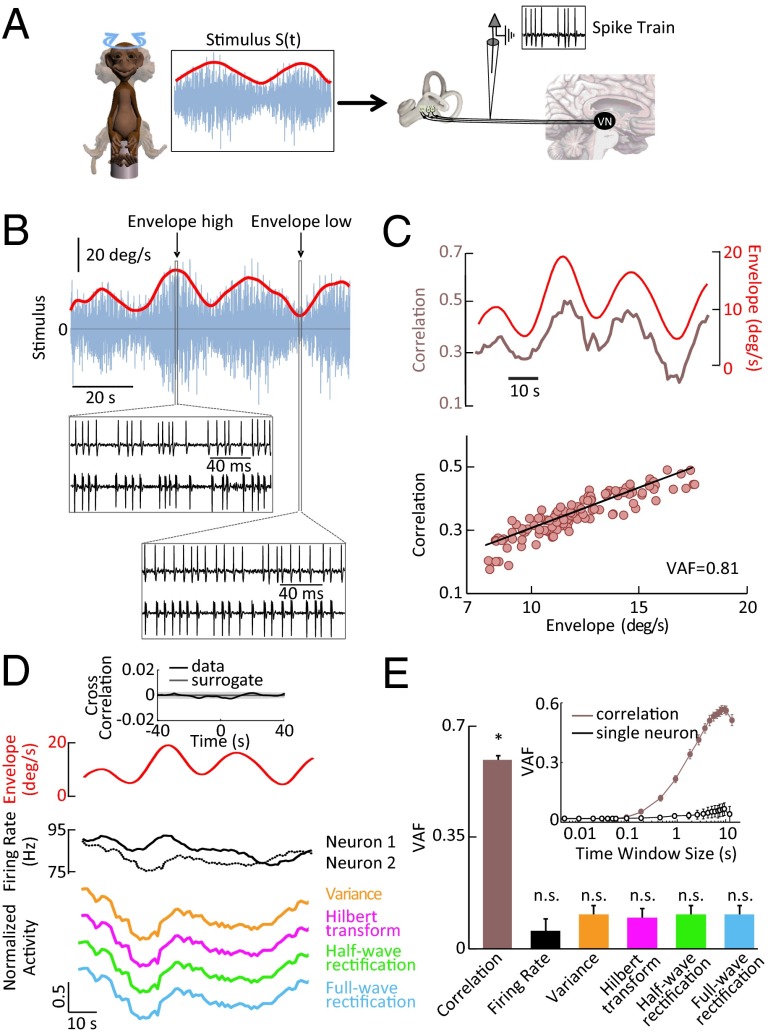Fig. 3.
Correlated but not single-neuron activity encodes the stimulus envelope in primate vestibular afferents. (A) The spiking activity of individual vestibular afferents were recorded from macaque monkeys during rotational stimuli whose angular velocity consisted of a noisy waveform (20-Hz cutoff frequency) (blue) whose amplitude (i.e., envelope, red) varied independently and consisted of low-pass–filtered white noise (0.05-Hz cutoff frequency). (B) Time-varying stimulus (blue) with zero mean (horizontal black line) and its envelope (red). (Insets) Spiking responses from an example vestibular afferent pair to a stimulus segment characterized by a high and low envelope. Note that, although the total numbers of spikes were similar (∼21), coincident spikes were more frequent when the envelope was high (16 vs. 9). (C, Top) Time-varying envelope (red), and correlation coefficient (brown) from the same pair. (Bottom) Correlation coefficient as a function of envelope showing a strong linear relationship as characterized by a high variance-accounted-for (VAF). (D, Top) Time-varying envelope (red), and corresponding firing rates of both neurons (black). (Bottom) Single-neural activity after applying nonlinear operations as in Fig. 1. (Inset) Cross-correlation function between the envelope and an example single vestibular afferent’s spiking activity (solid black) as well as uncorrelated surrogate data (solid gray). The band shows the 95% confidence interval of the surrogate dataset. (E) Population-averaged VAF values for correlation coefficient (red; n = 121 pairs), as well as for firing rate and for single-neural activity after applying nonlinear operations (black and colored bars; n = 18). The asterisk (*) indicates statistical significance at the P = 0.01 level using a Wilcoxon rank sum test. (Inset) VAF computed from correlated activity of reconstituted pairs of afferents and from single-neuron activity as a function of the time window used to calculate the correlation coefficient. Filled circles indicate statistically significant values from zero at the P = 0.05 level using a t test. Open circles indicate that the values were not significantly different from zero.

